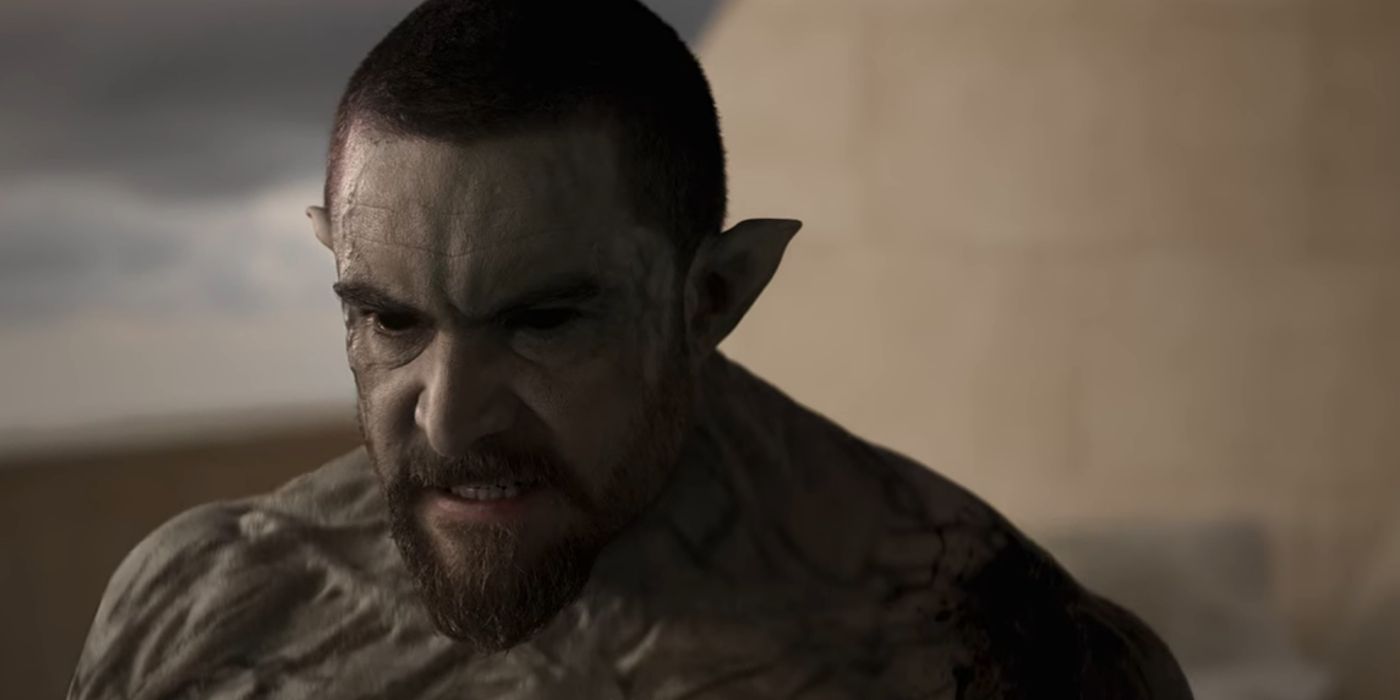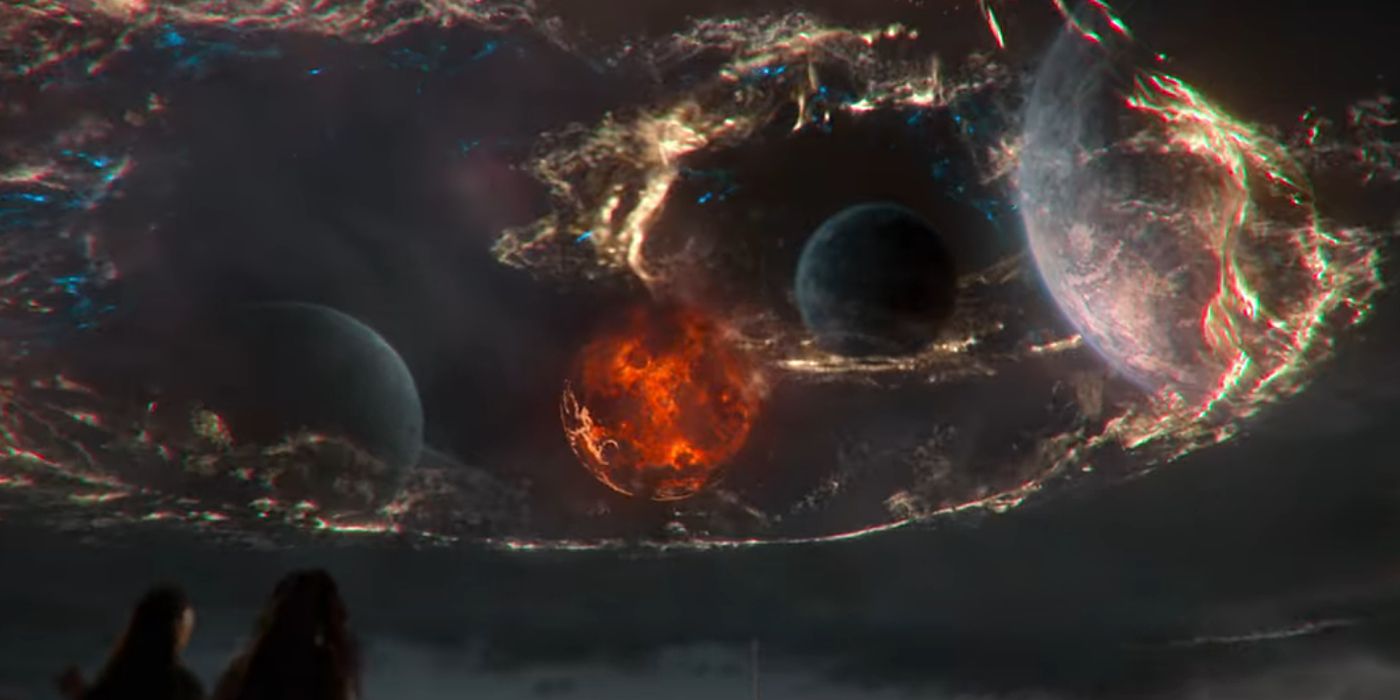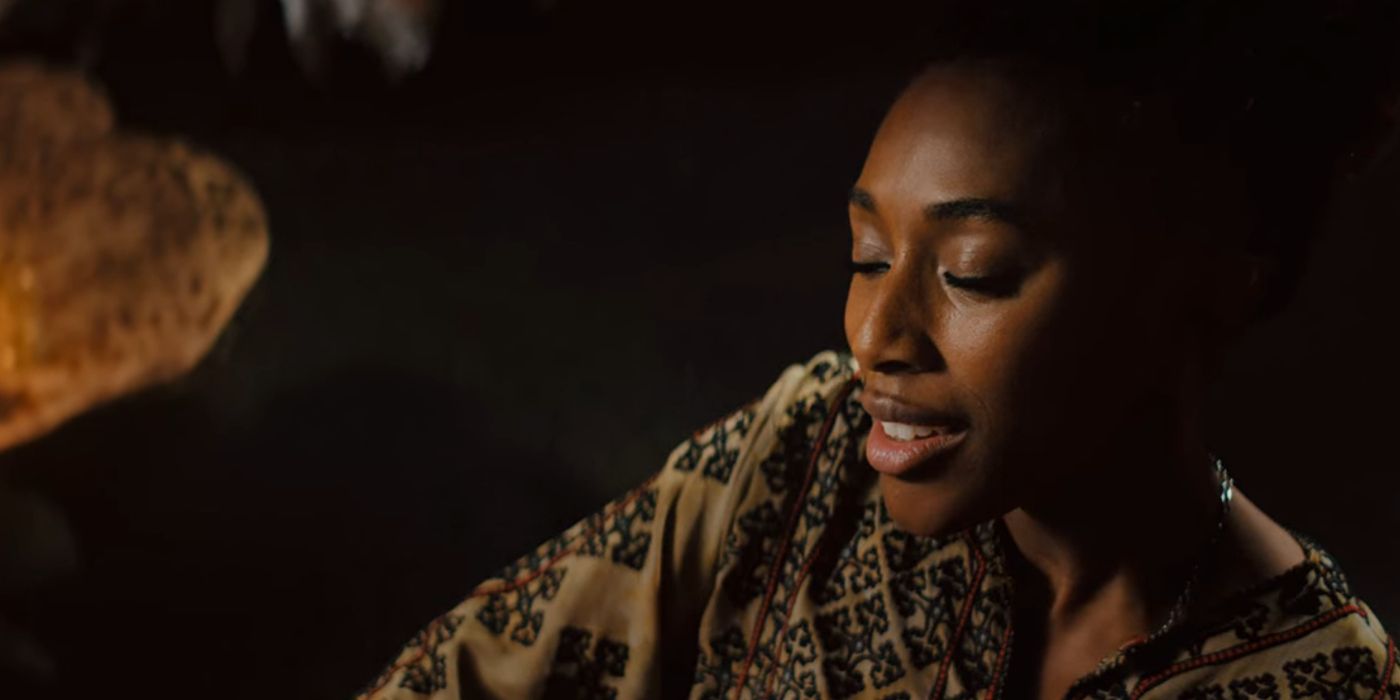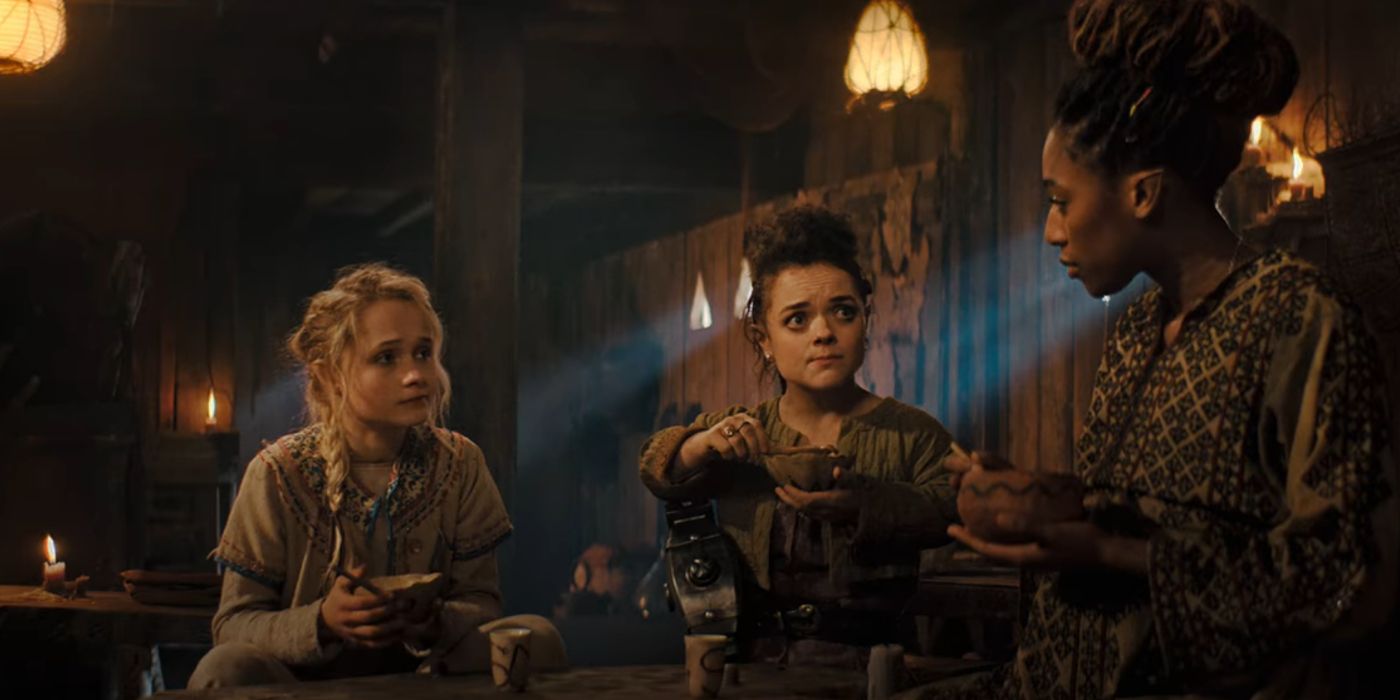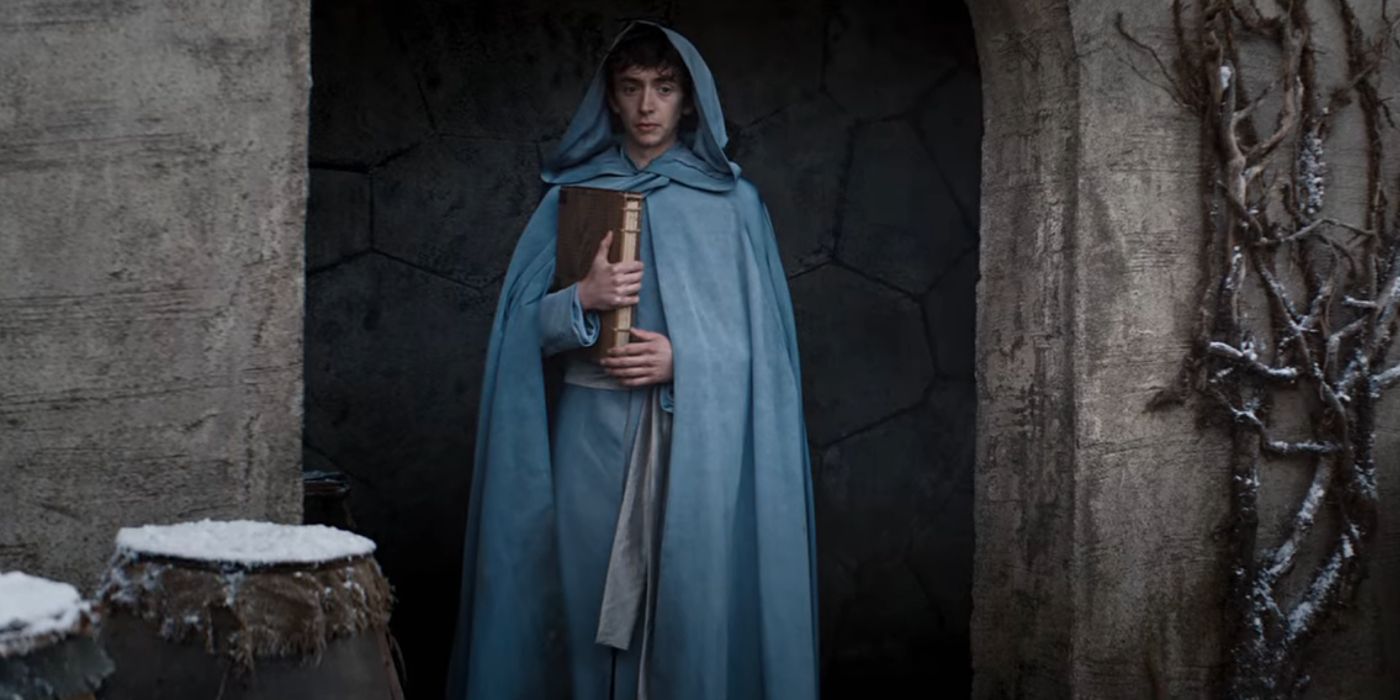Witcher: Blood Origin Ending Explained (In Detail)
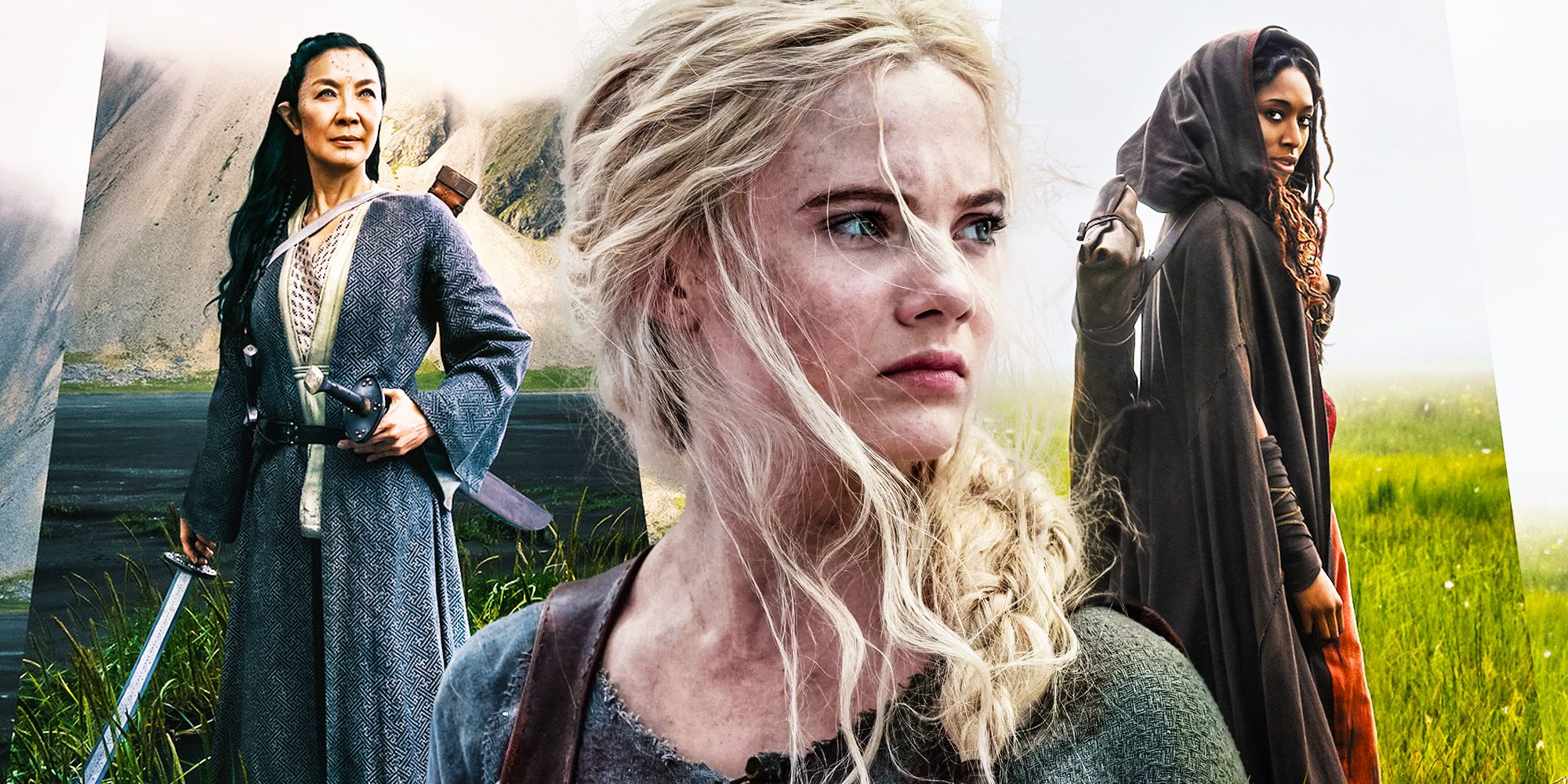
This article contains spoilers for The Witcher: Blood Origin.The Witcher: Blood Origin‘s ending serves as setup for The Witcher season 3, revealing the truth behind the Conjunction of the Spheres and another prophecy that’s sure to have a profound influence on Ciri’s life. Inspired by Polish novelist Andrzej Sapkowski’s books and short stories, Netflix’s The Witcher series is set on a fantasy world plagued by monsters. Its protagonists, Henry Cavill’s Geralt and Frey Allan’s Ciri, live in a time foretold by ancient prophecies – and they will pay a fearful price to see these prophecies fulfilled.
Netflix hope to turn The Witcher into a massive franchise, and spinoffs such as The Witcher: Blood Origin are a crucial part of the streaming giant’s plans. The main story of The Witcher: Blood Origin is set 1,200 years before the events of the main series, kicking off when Geralt’s friend Jaskier learns the Continent’s forgotten history after an encounter with a mysterious, powerful Storyteller claiming to transcend time and space. She tells Jaskier a tale of seven intrepid adventurers who worked to overthrow the last elven Golden Empire, and whose battle against the ruthless sorcerer Balor unwittingly tore apart the fabric of the universe. The final episode of The Witcher: Blood Origin reveals the truth about the Conjunction of the Spheres, and the origin of the first Witcher.
The First Witcher Is Created Using The Blood Of Monsters
The Golden Empire was established through an unholy partnership between Lenny Henry’s sorcerer Balor and Mirrem Mack’s Princess Merwyn, with Balor successfully gaining control of a monster from another world. A misadventure through one of the Monoliths leaves the Seven with the corpse of another creature, and they hit upon an idea; to use sorcery and alchemy to combine the monster’s essence with one of their party. Laurence O’Fuarain’s Fjal becomes the first Witcher, subjected to a version of the ritual that would eventually become known as the Trial of Grasses. This initial process is a dangerous one, however, with the monster-blood gradually taking control of his mind. Only the love of Sophia Brown’s Éile allows him to retain his humanity for a brief time – and he must eventually be killed.
The Seven initially believe only one of these beings will ever be needed. They soon learn otherwise, however, because their attempt to stop Balor and destroy the master Monolith in Xintr’ea goes badly wrong, unleashing monsters on the world. No doubt the Trial of Grasses is refined over the years, using the blood of different monsters to create more Witchers. This provides another potential reason for the near-extinction of Witchers by the time of Geralt, when monsters are rarer.
The Witcher: Blood Origin Finally Explains The Conjunction Of The Spheres
The Witcher: Blood Origin explains the Conjunction of the Spheres, a mystical event in which different worlds and times collided. Zach Wyatt’s Syndril had discovered how to use ancient dwarven Monoliths to travel through spacetime, a power that had been abused by Balor. Burdened with guilt and a strong sense of responsibility, Syndril headed to Xintr’ea to attack the master Monolith, but arrived too late; Balor had become infused with the Chaos magic of other worlds. Desperate, Syndril bound himself and Balor to the master Monolith in a circuit of power, combining his own Order magic with Balor’s chaos. The result was destructive, with the master Monolith shattered, but the destruction reverberated across space and time. It caused the Conjunction of the Spheres.
“The fragile veils between worlds had been torn apart,” the Storyteller explained as she recounted this tale to Jaskier. “Planes of existence began to cross. Skies warred with skies. Night fed upon day. Multiple worlds crossed through each other, scattering species like seeds as they merged.” This is the origin of the monsters seen in The Witcher, creatures from other worlds and times that have been stranded on the Continent. It is also the origin of humanity, because humans were transported to the Continent through the Conjunction of the Spheres as well. The elves – who had themselves taken the Continent from the dwarves long ago – would soon be supplanted by these new arrivals. Human mages have an affinity for Chaos, mastering the magic of other planes that has now been left on the Continent.
The Witcher: Blood Origin Reveals Some Secrets Of The Elder Blood
The Witcher: Blood Origin also reveals the history of the Elder Blood (although, obviously, it was not known by that name at the time). Fjal and Éile sleep together after his transformation into the first Witcher, and she bears children. The implication is that their bloodline – one that contains the Chaos magic of a creature from another world – is in fact the Elder Blood discussed at length in The Witcher. Sometime after the Conjunction of the Spheres, the elven sorceress Lara Dorren – presumably one of Fjal and Éile’s descendants, a generation or two removed – falls in love with a Cintran king. Thus the Elder Blood becomes part of the Cintran bloodline, ultimately manifesting in Ciri.
The true power of the Elder Blood is still something of a mystery. It’s possible the power comes from the combination of elven magic (Order) and the Chaos magic of the creature whose blood was used to enhance Fjal. If this is indeed the case, then those of the Elder Blood are tied magically to the events that tore apart the fabric of the universe. Ciri may even be a living substitute for the control Monolith, destroyed at Xintr’ea.
Ithlinne’s New prophecy Is An Ominous One For Ciri
Prophecies have shaped Ciri’s life, and The Witcher: Blood Origin tells of one that has been forgotten. It, too, is spoken by Ithlinne (played by Ella Schrey-Yeats in this prequel series). “The time of the spheres is upon us,” Ithlinne declares. “Aen Seidhe lost across the skies. Cast adrift in time. Ever searching for love… Lost. And left behind. The Lark’s seed shall carry forth the first note of a song that ends all times, and one of her blood shall sing the last.” This isn’t Ithlinne’s most famous prophecy, of course; that has already been heard in The Witcher, and it differs to the one recounted by the Storyteller. That explains Jaskier’s surprise, particularly at the idea the foretold one would be responsible for the end of all times.
The Witcher: Blood Origin Sets Up The Wild Hunt & Avallac’h
The Witcher: Blood Origin‘s post-credits scene reveals the origin of the Wild Hunt, the ancient elves destined to pursue Ciri in The Witcher. It seems elves were scattered across spacetime by the Conjunction of the Spheres, notably including Eredin Bréacc Glas (played by Jacob Collins-Levy in The Witcher: Blood Origin) and Avallac’h (played by Samuel Blenkin) – who is already apparently watching Ciri. In the books, both Avallac’h and Eredin become obsessed with Ciri after discovering the potential of her Elder Blood, and pursue her in a frankly insane attempt to woo her. The Witcher: Blood Origin‘s post-credits scene is therefore a direct link with the main series, given the Wild Hunt became aware of Ciri at the end of The Witcher season 2. The narrative of this prequel series is therefore more important than it seems, because it provides context for Ciri’s future story and sets up major characters.
Share this news on your Fb,Twitter and Whatsapp
NY Press News:Latest News Headlines
NY Press News||Health||New York||USA News||Technology||World NewsTimes News Network:Latest News Headlines
Times News Network||Health||New York||USA News||Technology||World News
